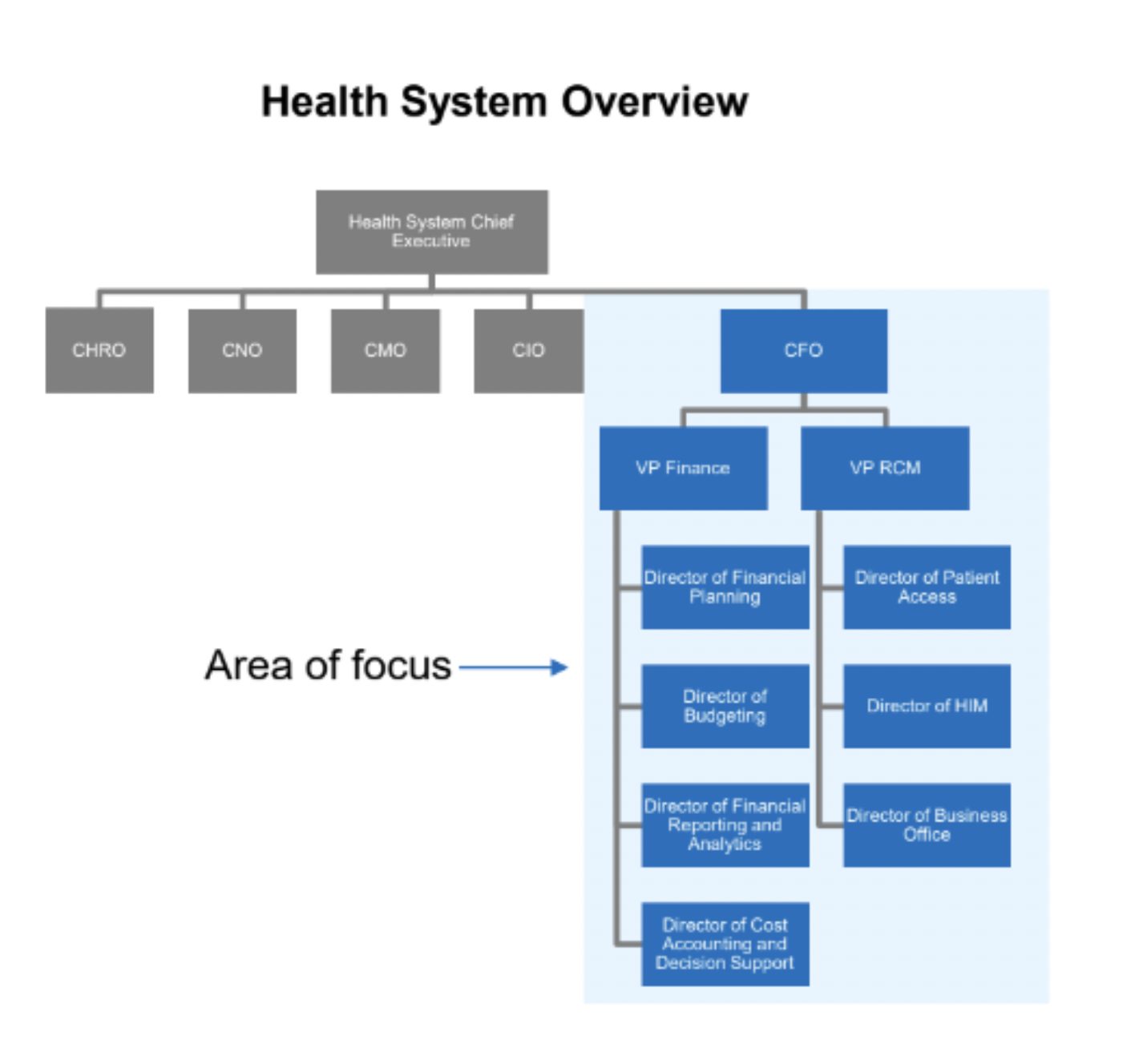Content Strategy
Quick Start Guide to Research-Informed Content for Healthcare Vendors
By Megan Williams on December 6, 2023
"Half of them are working off instinct and hunches."
That comment is about healthcare providers and their budget decisions. It came from the head of sales of one of my healthcare SaaS clients.
He was saying that a good number of the providers he talks to—instead of rooting their business decisions in data and patient feedback—are leaning into their "gut," assuming experience will be all they need to hit their business goals. And their results are spotty, sometimes even disastrous.
Ironically, many healthcare vendors make the same mistake with their marketing. They're building stellar technology, but ultimately, their content marketing is informed by vibes and outdated best practices—not customer data. An easy way to begin correcting this is through second-party research.
A 3-Part tour of research-informed content strategy
In this series, I will cover all the fundamentals of research-informed content marketing for healthcare vendors. The methods I cover here apply to any market research. However, I'm using a recent study from the Healthcare Finance Management Association to give you actionable insights and illustrate the finer points. (It covers the feedback from over 320 health system executives and their buying plans over the next 12-18 months.)
This type of market research is sadly underutilized in content strategy. Building healthy customer relationships requires careful listening to customer needs. Thankfully, this level of information is readily available to healthcare vendors, giving direct insight into the hyper-specific pain points, challenges, and aspirations of healthcare audiences.
Let's start with the low-hanging fruit—the easiest wins your team can derive from healthcare market research.
Validating and refining your segmentation
Effective segmentation is challenging in the healthcare space. Health systems buy differently than long-term care organizations, and titles can shift between organizations within the same category. While this can be an incentive to take a less granular approach to segmenting your healthcare audience, that decision can be a recipe for mediocrity when selling into more complex organizations where buying committees and working groups are made up of stakeholders from a range of departments.
Most healthcare vendors will need to practice careful segmentation to achieve true content personalization, and market research can make this exercise much easier and more effective (especially if you're leveraging generative AI). Many reports focus on specific roles or titles and zero in on their concerns. This can provide a path to low-cost or even free profiles of your key decision-makers and influencers.
Applying research to content marketing
The HFMA study breaks its findings down by firmographics, including bed size, EMR, and region. It also provides a visual of the key roles in the hospital revenue cycle, including director of HIM, VP of finance, and director of budgeting. But it also provides some segmentation options you might have yet to consider.
The report presents information from angles such as where in the organization decisions are made (health system, hospital, or regional levels), as well as current vendor relationships—i.e., are health systems that already outsource revenue cycle technology more or less likely to buy from another vendor?
Aligning content pillars with market challenges
Are your content pillars keeping rhythm with the concerns of your healthcare audience? By grounding your content pillars in market research, you'll stay on beat with the challenges and attention of your most influential decision makers—and stand out in a world of content overload.
While most marketers aim for continuous relevance, keeping up with the fast-changing and granular nature of healthcare challenges makes this tricky. Even the most well-thought-out themes can go stale with micro shifts in the healthcare landscape, leaving your content irrelevant to parts or all of your healthcare audience.
The great thing is that market research published in healthcare regularly covers the most pressing concerns of specific healthcare leaders. Check in on platforms like Becker's ASC or Fierce Healthcare's Payer Corner, and you'll find regular reports on the issues keeping your target market up at night.
These reports are a pretty straightforward hack for better understanding your target healthcare audiences and how to keep their attention. You can use these to inform your positioning, inspire value-added educational content that builds trust and authority, and create subject lines that stand out in noisy inboxes.
Applying research to content marketing
Even the overview of a good research report can be helpful (download it if you want additional context on what we're covering), but the beauty of working with the full version is that you'll have access to the granular insights that are often critical for context and more nuanced strategy development.
The HFMA study starts by laying out market dynamics, detailing factors including:
- How health systems are using technology to address labor market issues
- How they want to leverage tech to respond to ongoing margin pressure
- How merger and acquisition activity is affecting their buying choices
The study also features a "Purchase Plans" section, which is an excellent opportunity to pull inspiration from the featured solution types. Some of the leading topics include:
- Budgeting
- Prior authorization
- Denials/Appeals Management
- Patient Self-Service/Digital Front Door
- Clinical Documentation Improvement (CDI)
- AI-Based Coding
Each of these could serve as content pillars within your strategy—I've seen vendors in the hospital and health system space create successful pillars for budgeting, patient self-service, CDI, and denials, in particular.
Setting an informed and effective editorial calendar
Depending on the market research you're using, you can find excellent information on the time horizon for topics to inform your editorial calendar. As much as internal business plans and marketing goals should inform your timing, you should also incorporate information from outside your organization.
Market research reports can illuminate not only what's on the minds of buyers now but also their forward-looking concerns. You'll find that many reports make projections over the next one to two years, making them highly useful in aligning calendar planning.
Applying research to content marketing
The HFMA study evaluates purchase plans for technology and services in finance and revenue cycle departments for 2023 and 2024. Keeping the timing of your sales cycle in mind makes it a solid source for setting an editorial calendar in that timeframe.
For this, we're using the "Purchase Plans" section. The beautiful thing about this section is that it's broken down into titles and roles, including:
- CEO/CFO
- Finance Tech
- Revenue Cycle Management Tech
- Patient Access
- Mid-Revenue Cycle
- Back-end Rev cycle
- RCM and Finance Outsourcing
- RCM and Finance Automation
Each section ranks the solution types getting the highest priority within each function and provides additional insights, including the reasons behind their decisions, their goals, and what's driving them away from alternative solutions.
You could use this section to inform your editorial calendar in myriad ways, but here are a few suggestions:
CEO/CFO Role
Identify how your solutions fit their top priorities over the next 18 months. You may want to add or even eliminate certain items on your content calendar based on what you're seeing.
RCM Technology
This section reveals that many systems plan on buying multiple solutions, which could inform how product features and topics are covered over the next year's calendar.
Finance Outsourcing
This section discusses the types of outsourcing the finance role is interested in over the near term, potentially serving as an indication to focus on how your solutions address issues like bad debt and patient collections.
RCM and Finance Automation
Automation is a hot topic in the rev cycle space, but it can be approached from multiple angles. This research could help settle debates on what to cover, when, and how deeply your automation content should dive into topics like patient scheduling, coding, bad debt, and Medicaid enrollment and eligibility.
Speak the language of your customer
If there's one rule content creators have to follow, it's that we should do everything we can to speak the native language of our audience. But this can be incredibly challenging in healthcare, where terminology can shift depending on whether you're talking to group practices, hospitals, or payers. Use the wrong term, and you can quickly out yourself as being disconnected from the realities of the problems you claim you can solve.
But you can turn much of that around by skimming market research. Reports will often include direct quotes and are generally created using language that the subjects easily understand. Depending on the report's target audience, you may find explanations of basic terms (this happens when the reports are designed for investors or readers outside the industry.)
Real-world example
The HFMA report could help update your style guide from a couple of angles.
You'll find a "Key Terms" section that lists and defines terminology, in this case, including "end-to-end" vendors, outsourcing terms, and concepts around the revenue cycle structure. Beyond this, reviewing the report can get your copywriters closer to "fluency"—helping them infuse copy with the keywords and terminology commonly used by healthcare stakeholders. It might even be worth including a few words and phrases in your formal style guide to make sure each piece of content hits specific notes.
You'll find a ton of market research regularly flowing in the healthcare space. But if you don't run across anything that meets your needs, consider investing in your own studies and surveys from a reputable and industry-specialized firm. You'll likely be amazed at the depth of insight and mileage you get from even a brief survey.
To learn more about research-guided content and get more key insights from this report, check out: Aligning Your Strategy to the Kinds of Content Healthcare Buyers Are Looking For and 8 Practical Ways to Leverage Healthcare Market Research in Your Content Strategy.

